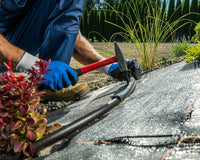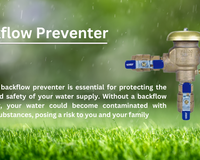Introduction
NDS catch basin drains effectively manage excess water, preventing landscape flooding and soil erosion. Discover how these durable and versatile drainage solutions can improve your landscape's health and sustainability. In this post, we’ll delve into what catch basin drains are, their benefits, and how they can be integrated into your landscape.
What are Catch Basin Drains?
Catch basin drains are underground drainage systems designed to collect excess surface water and direct it away from problem areas. They are typically installed at low points in the landscape, where water naturally accumulates. NDS catch basin drains come in various sizes and configurations to suit different drainage needs.
Why Catch Basin Drains are Essential
-
Flood Prevention
- Efficient Water Collection: These systems efficiently collect and redirect excess water, preventing flooding and water damage in your yard.
- Protect Structures: By controlling water flow, catch basins help protect buildings, driveways, and other structures from water-related damage.
-
Soil Erosion Control
- Stabilize Soil: Proper drainage helps maintain soil stability, reducing the risk of erosion that can compromise the landscape's integrity.
- Protect Plant Life: Consistent drainage prevents soil from washing away, ensuring plants remain securely rooted.
-
Water Quality Improvement
- Filter Debris: NDS catch basins are designed to filter out debris, preventing pollutants from entering the drainage system and local waterways.
- Reduce Runoff Contamination: Effective drainage systems minimize the flow of contaminants into natural water sources.
Installing NDS Catch Basin Drains
-
Assess the Landscape
- Identify low-lying areas and water accumulation points where catch basins would be most effective.
- Plan the drainage route to ensure efficient water redirection.
-
Choose the Right Size
- Select a catch basin size based on the volume of water typically collected in the area.
- NDS offers a range of sizes, ensuring there's a suitable option for every landscape.
-
Proper Installation
- Dig a hole at the identified low point and place the catch basin, ensuring it is level.
- Connect the basin to a drainage pipe that leads to a safe discharge area, such as a dry well or storm drain.
-
Maintenance
- Regularly inspect and clean the catch basin to ensure it remains free of debris and functions efficiently.
- Check the surrounding area for signs of erosion or water buildup and adjust the system as needed.
Benefits of NDS Catch Basin Drains
-
Durability and Reliability
- Made from high-quality materials, NDS catch basins are designed to withstand harsh weather conditions and heavy water flow.
- Their robust construction ensures long-term performance and minimal maintenance.
-
Versatility
- Suitable for residential, commercial, and industrial applications, NDS catch basins can be customized to meet diverse drainage needs.
- Their modular design allows for easy integration into existing drainage systems.
-
Environmental Impact
- By managing water runoff effectively, these drains help protect natural water sources and promote sustainable landscaping practices.
Conclusion
Catch basin drains by NDS are an essential component of effective landscape drainage systems. They offer numerous benefits, including flood prevention, soil erosion control, and water quality improvement. By understanding their importance and following best practices for installation and maintenance, you can ensure a healthy and beautiful landscape year-round.
Frequently Asked Questions: Catch Basin Drains by NDS
Q: What is a catch basin drain?
A: A catch basin drain is a drainage system component designed to collect and manage surface water runoff, preventing flooding and water damage.
Q: Why do I need a catch basin drain?
A: Catch basin drains help prevent water accumulation around your property, which can lead to erosion, foundation damage, and waterlogging in gardens and lawns.
Q: How do catch basin drains work?
A: They collect surface water through a grate and direct it into a drainage system, where the water is then transported away from your property to a safe discharge point.
Q: Where should I install a catch basin drain?
A: Install them in areas prone to water pooling, such as low spots in your yard, at the end of driveways, or near downspouts.
Q: What maintenance is required for catch basin drains?
A: Regularly check and clean the grate to remove debris and ensure proper water flow. Periodically inspect the basin and pipes for clogs or damage.





